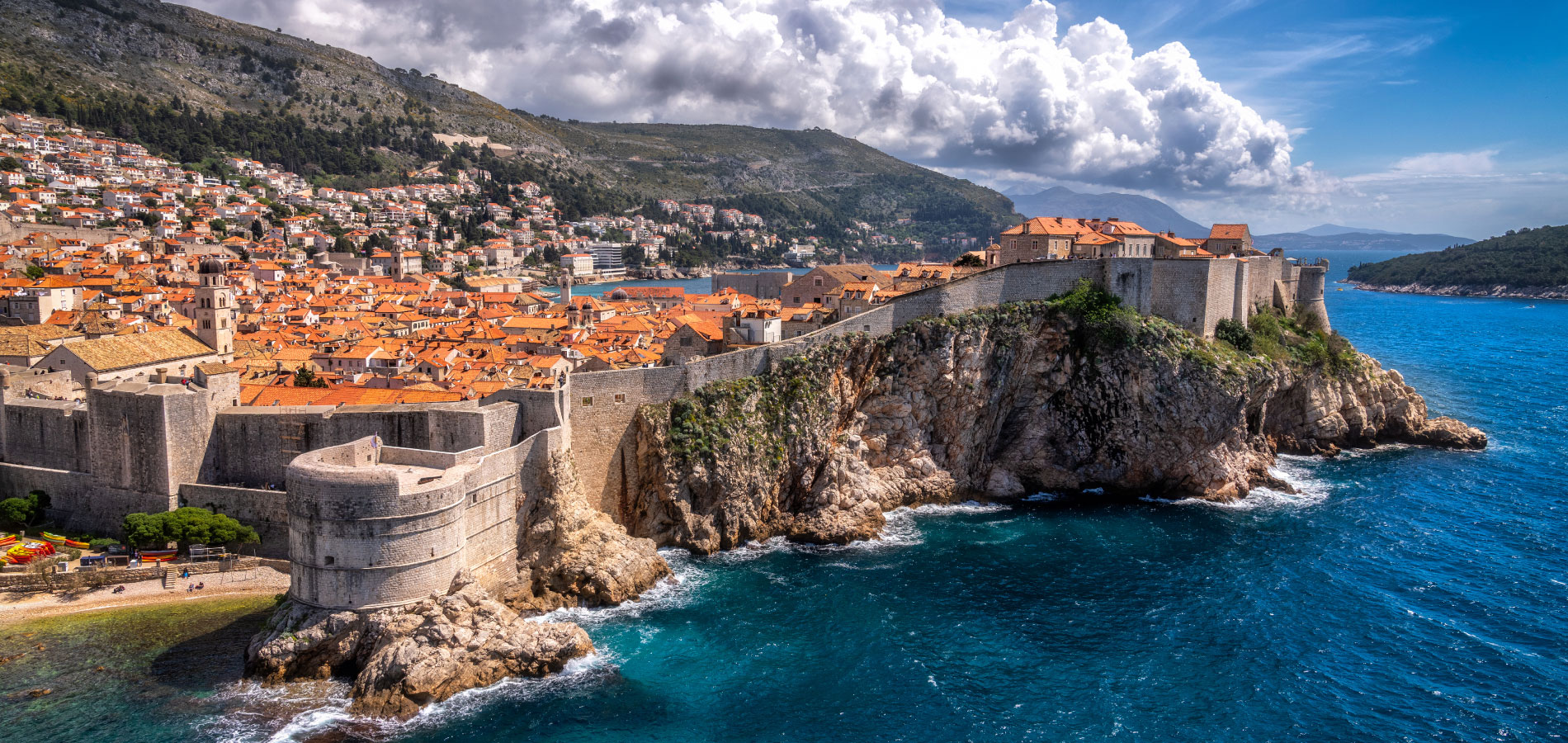
Croatia is a Central European and Mediterranean country, bordering Slovenia to the west, Hungary to the north, Serbia to the east and Bosnia and Herzegovina to the south; the country also has a long maritime border with Italy in the Adriatic Sea. These borders total 2,028 km altogether. …
Croatia has an unusual shape (similar to a croissant!) that is unlike any other country in the world. This unusual shape is as a result of five centuries of expansion by the Ottoman (Turkish) empire towards Central Europe. (Although having said this, the Turks never actually conquered the country; they did however control some of Croatia’s neighbours such as Serbia and Bosnia and Hercegovina.)
• Croatia is the home of world popular dog breed called Dalmatians.
• Dubrovnik is famous for centuries
• Croatians used their Glagolitic script which is the oldest Slavic script.
• Croatia has way too much islands!
• Trade transformation from fur to coins
• Croatian money is named Kuna because trappers used to trade their furs.
• Games of Thrones Kings Landing is in fact Croatian town Dubrovnik.
• There are Croats even on Moon
• There are names of two Croatian’s on the map on the moon. Scientists J. R. Boskovic and A. Mohorovicic.
• Croatia invented the necktie.
• Croatia is animal friendly
• The last specimen of the Mediterranean seal lives in the Croatian aquatorium.
• Almost 10% of Croatia is made up of 11 nature parks, eight national parks and two nature reserves.
• In Croatia sea plays Organs
• World’s first pipe organ that is played by the sea’s rhythmic waves is in Zadar.
• Small town with a big feart
• Croatia is home of the world’s smallest town called “Hum”
• Croatia enjoys 2715 hours of sunshine a year. That’s more than Sydney, Australia.
• Even old Egyptians loved this area
• The Sphinx in Split was brought over from Egypt for Diocletian and is over 4000 years old.
• Croatia is home of the world’s biggest truffle.
• Croatia has highest number of UNESCO Intangible Goods of any European country.
• Zlatni rat beach changes in shape and colour depending on the wind.
• Croatia was the home of largest Neanderthal community
• Croatia has the richest collection of remains of Neanderthal people in the world.
• Don’t fear the Dark, use Maglite
• The Mag Light was invented by a Croatian named Maglica.
If you’ve fantasized about balmy Mediterranean evenings, along turquoise coasts, with a plate full of oysters and a glass of red wine in hand, then Croatia is the place for you. This extraordinary nation ticks every sensory expectation, creating the perfect backdrop for endless vacationing. With exceptional historic, cultural, natural and recreational offerings throughout the year, you may be asking yourself what is the best time to visit Croatia.
• Dubrovnik Old Town Walls
• Diocletian’s Palace in Split
• Hvar Town
• Plitvice Lakes National Park
• Zagreb’s Gornji Grad
• Sailing around Kornati National Park
• Zadar’s Romanesque Churches
• Zlatni Rat Beach
• The Pretty Town of Korcula
• Mljet National Park
• Rovinj
• Brijuni National Park
• Trogir
• Rijeka
• Sibenik
1. Rijeka Carnival (January/February)
2. Zagreb Festival of Lights (March)
3. Easter Food Festival in Rovinj (March/April)
4. Spring Procession of Ljelje/Kraljice, Gorjani (May)
5. Korčula Sword Dance Festival (June)
6. Half New Year’s Eve, Korčula (June)
7. International Folklore Festival, Zagreb (July)
8. Špancirfest, Varaždin (August)
9. Visualia Festival, Pula (September)
• The Croatian Cravat (Croatian Tie)
• Lavender Products
• Traditional Croatian Lace
• Licitar Heart
• Croatian Rakija Brandy
• Croatian Cheese
• Kraš Chocolates
• Croatian Olive Oil
• Croatian Wine
• Black risotto
• Boškarin
• Brodetto
• Buzara
• Fritule
• Fuži and pljukanci
• Istrian ham
• Malvazija and Teran
• Peka
• Truffles
